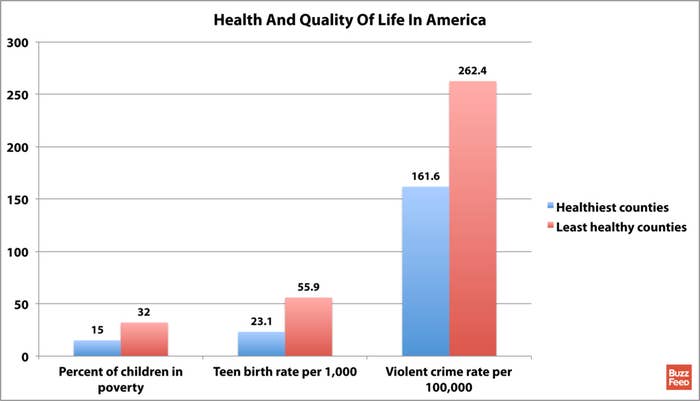
There's a huge gap between America's healthiest and least healthy places, and it's not just about physical health: according to new research, the least healthy parts of the country also fare far worse than the healthiest ones when it comes to violent crime, childhood poverty, and births to teenage parents.
In its yearly county-by-county study released Wednesday, researchers from the Robert Wood Johnson Foundation measured a county's health using factors like its residents' birth weight, lifespan, and number of days per year spent ill. They found a big disparity: the premature death rate (measured by death before age 75) of the unhealthiest counties in each state was more than double that of the healthiest. And counties with the worst health also struggled with a host of other problems, from high teen birthrates to high unemployment to low rates of college attendance. The study paints a portrait of a country deeply divided between places that are healthy, wealthy, and safe, and places that are unhealthy, poor, and dangerous.
All these problems "probably share common social and economic root causes," said epidemiologist Pat Remington, who worked on the study. Poverty might be causing unhealthy behavior, for instance: "In communities that have lots of economic challenges, you'll find that people are taking risks more commonly."
However, he said, "That doesn't mean you should be fatalistic." A link between economic and physical health could be good if it means that bringing jobs to an area also helps its residents live longer. And he mentioned counties that had taken past poor health rankings as an impetus to do better, building more sidewalks and grocery stores and founding biking programs.
Those changes might not transform struggling counties immediately, he said, but "we're in this for the long haul. This is not like a business that can turn its profits around in the next year. This is really something that communities have to invest in almost for the next generation."
